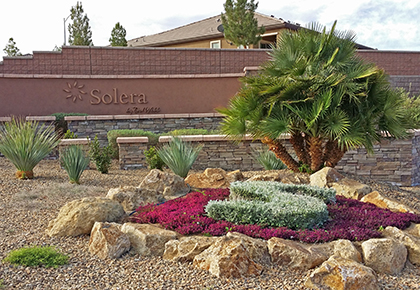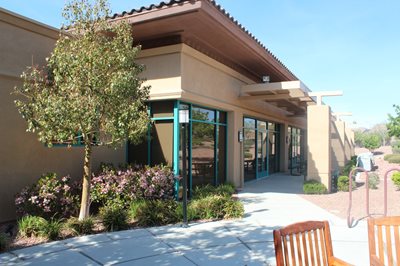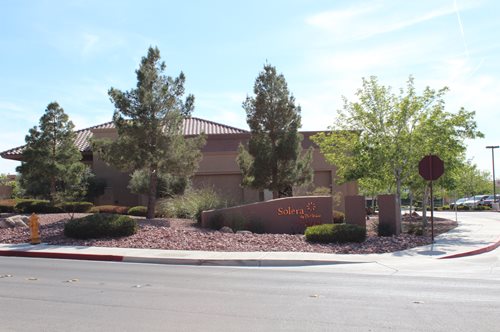Success Story: Active Adult Community Saves $400,000+ by Going Green
For many homeowners associations (HOAs), the idea of spending money on costly capital improvement projects can be daunting. If those projects aren’t absolutely necessary, it may even seem imprudent, despite the long-term benefits. But for the Solera at Anthem Community Association, the decision to embark on several energy-efficiency projects was a way of turning construction “lemons” into lemonade.

The Association
Located within the Anthem master planned community in Henderson, Nevada, Solera at Anthem is an active adult community consisting of 1,822 single-family and villa-style attached homes. Amenities include tennis courts, bocce ball courts, an indoor pool and spa and a recently upgraded state-of-the-art fitness facility. The association maintains a healthy reserve fund and has kept its assessment fees at the same modest rate since 2008.
When construction of the community was completed in 2006, the HOA was transitioned over to the homeowners, and the new board of directors hired FirstService Residential to be the management company. FirstService Residential remains the community’s management company.
“FirstService Residential has provided us with really quality staff that has looked out for the best interest of Solera. Dave [Rosequist], our facilities manager, was so proactive. More than saving us over $400,000, he made recommendations knowing that the refrigerant laws were changing. We would have gotten gouged if not for him. Our common facilities are like brand new now because of the efforts of Dave and FirstService Residential."
- Board President, Solera at Anthem Community Association
The Challenge
Since large communities feature numerous and complex amenities, various issues need to be addressed. One of these issues resulted in the board enlisting the help of an attorney and Solera ultimately accepting a settlement.
In the midst of the litigation process, Solera’s onsite facilities manager, David Rosequist of FirstService Residential, had been investigating options to save money for the community. He knew that maintaining current assessment fee rates was a high priority for Solera. However, with the rising price of utilities and other services, he also knew this would not be possible much longer unless the association found ways to cut some of their costs.
The Solution
Based on financial projections obtained from FirstService Residential subsidiary FS Energy and individual research, Rosequist determined that Solera could obtain the greatest return on investment by implementing three sustainability projects:
- Retrofitted all high-voltage exterior pole lighting with high-efficiency LED lighting (48 poles in the parking lot and 36 poles around the tennis, pickleball and bocce courts)
- Retrofitted all common-area interior lighting to LED (387 light fixtures)
- Replaced heating, ventilation and air conditioning (HVAC) systems with high-efficiency models (13 units) that do not run on the common refrigerant, R-22 (better known as Freon)
Rosequist presented his recommendations to the board of directors and provided a cost analysis. He said, “We had some initial discussions, but what really was the driver behind starting the projects was the lawsuit.” The settlement provided more than enough money for Solera not only to remedy the construction defects, but to undertake a range of other upgrades as well. The sustainability projects were at the top of the list.
Since FirstService Residential maintained a list of vendors it had vetted and approved, Rosequist was able to quickly find reliable companies at the best price. Work on the defects and energy-efficiency upgrades began in September 2015 and was completed by the end of 2016.

The Results
Once Solera had used the new energy-efficient lighting and HVAC systems for several months, Rosequist analyzed their usage. After accounting for the $255,658 implementation cost, he determined that:
- Solera would save a total of $428,342 in energy and operational and maintenance costs over a 10-year period
- The exterior lighting would pay for itself in under six years
- The interior lighting would pay for itself in a little over four years
- The HVAC systems would pay for themselves in just over seven years
Another area of savings involved Freon refrigerant. As of 2020, it will no longer be produced or imported in the United States, so supplies are diminishing and prices are rising steeply. The cost of repairing an older system that runs on the refrigerant has climbed substantially. These costs are no longer an issue with the new HVAC systems.
These savings will more than offset any price increases for electricity and other necessary services. In fact, the board of directors expects to be able to keep assessments at their current level for at least another seven to 10 years. That’s good for residents’ pocketbooks and property values. In addition, better outdoor lighting has made the parking lot safer, while the new HVAC systems have enhanced the comfort of indoor common areas.
According to Rosequist, “Solera’s smaller carbon footprint and the lower cost for residents really make the community stand out. A lot of places will turn to LEDs, but this was a comprehensive upgrade.”
Not surprisingly, the response from the community has been overwhelmingly positive. “FirstService Residential has built a strong trust with the community over the years,” Rosequist said. “These projects reinforced the value of our expertise and resources. We helped the community save a significant amount of money and improve their reputation in the greater community. We also enhanced the resident experience by making their common areas safer and more enjoyable without requiring them to spend a penny more in assessment fees.”
As for the future? The board is now thinking about solar.
Let's Talk
To speak with an associate about your community's needs, complete the form below and we will contact you soon.

